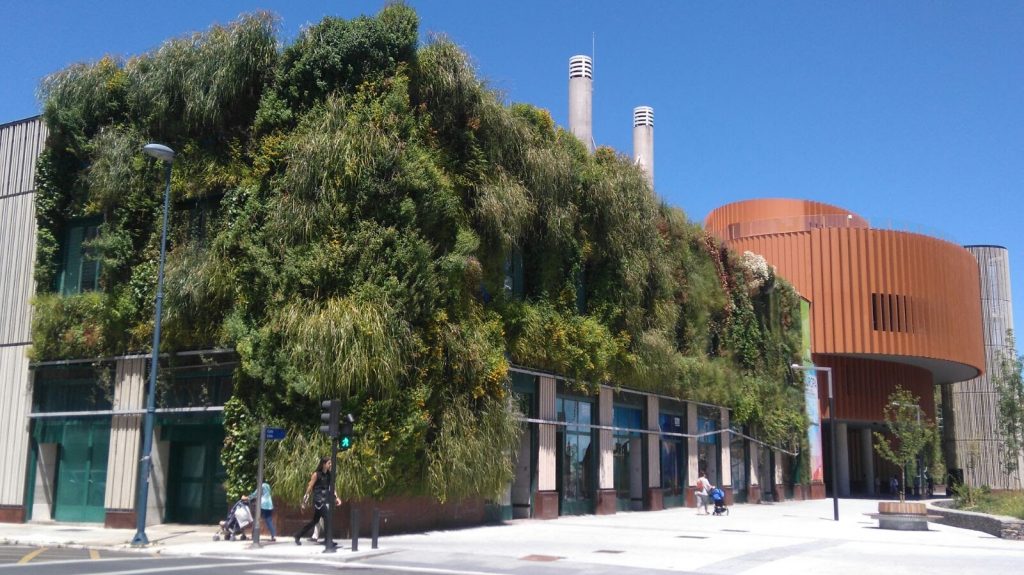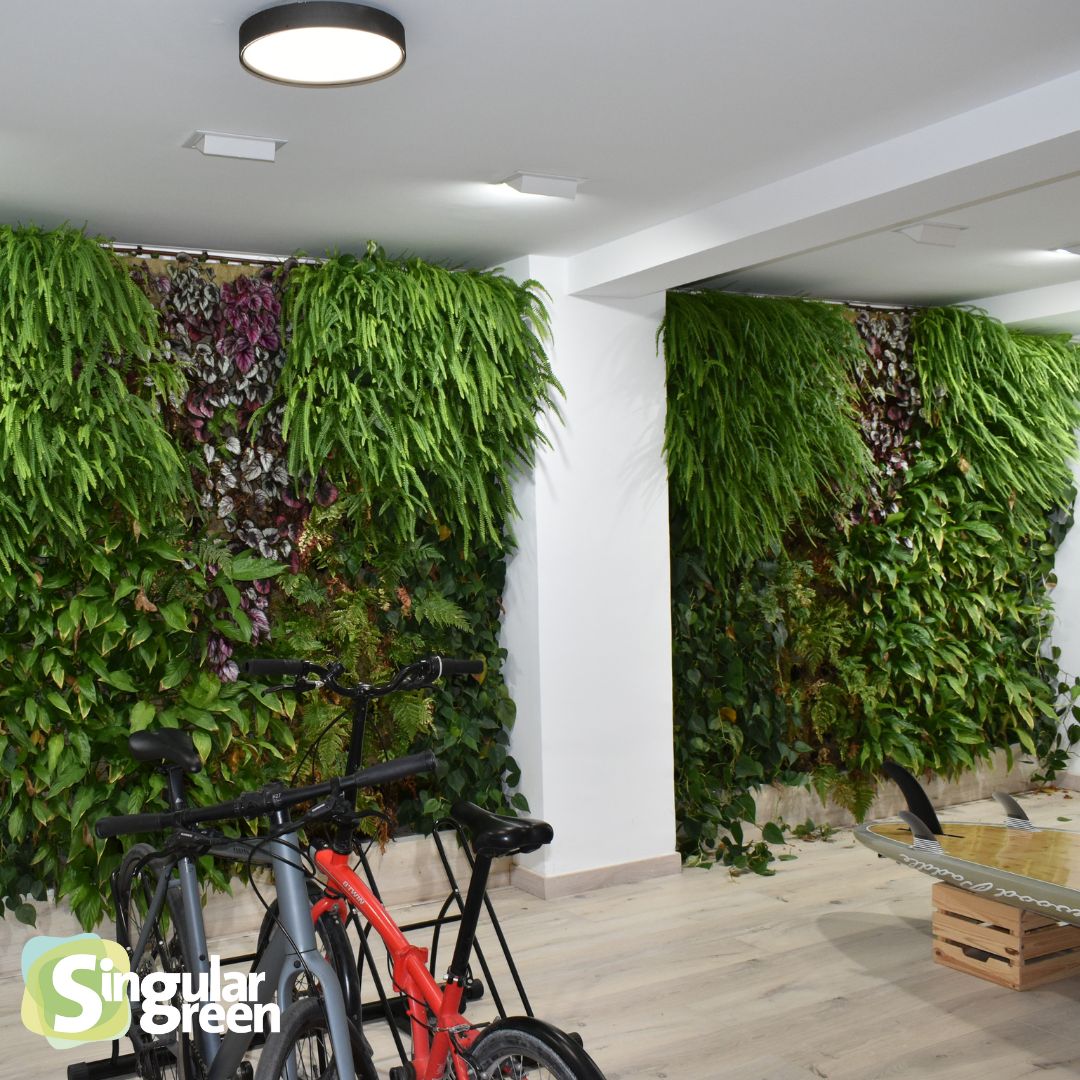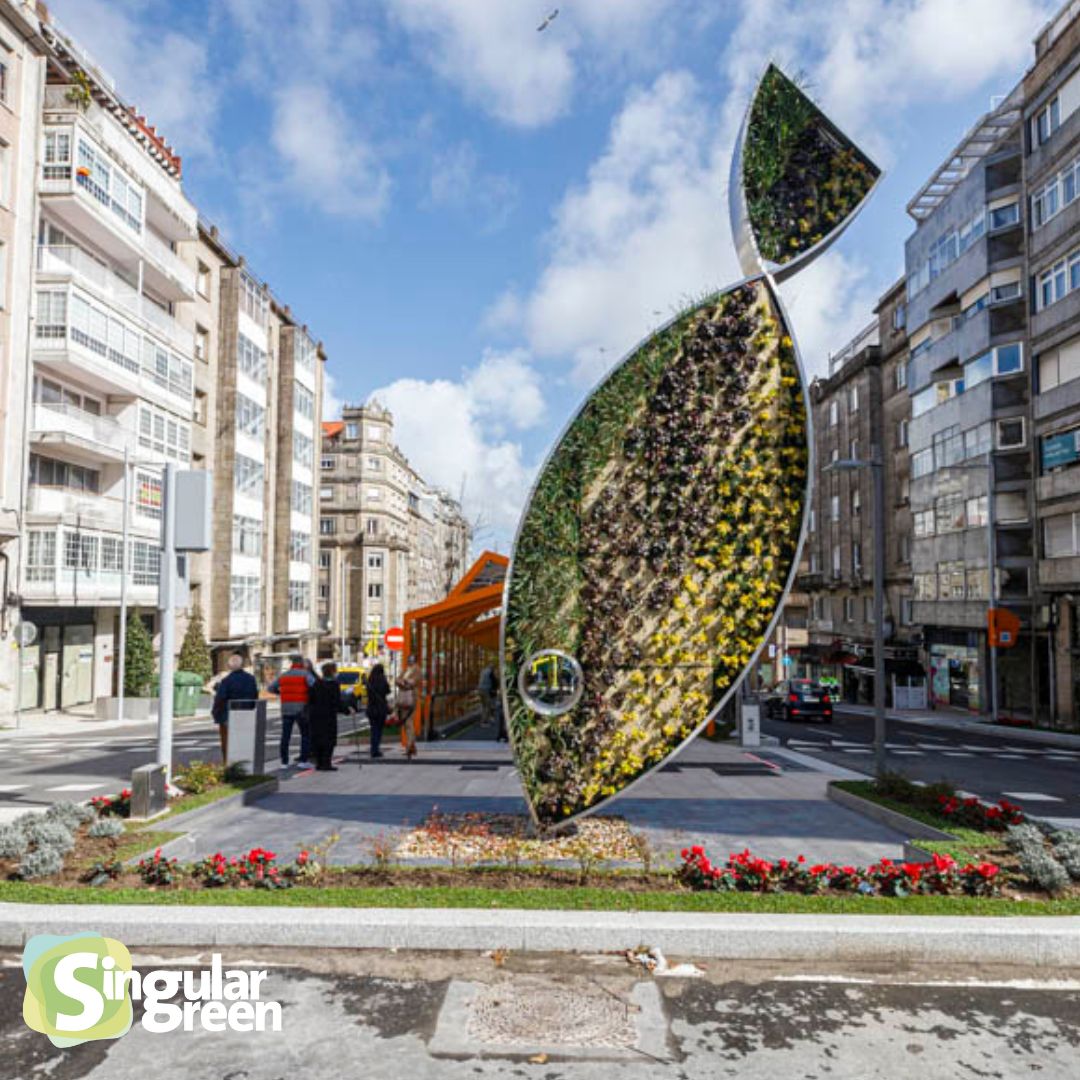The durability of a vertical garden is a common concern for those entering the world of vertical gardening.
Throughout our experience in building these ecosystems, we have learned that a vertical garden can last indefinitely, as long as the right materials are used and constant maintenance is carried out.

The importance of choosing the right materials for the durability of the vertical garden
One of the key factors to guarantee the durability of a vertical garden is the choice of materials.
The companies that work in vertical gardening try to solve these problems with a wide variety of materials and constructive solutions. These solutions can be classified into two main groups: hydroponic systems and substrate systems.
Vertical gardens that use organic substrate tend to degrade more quickly. This is particularly true for homemade or less sophisticated systems, such as those based on recycled pallets.
The interaction between the organic substrate and plant roots causes accelerated wear and tear, reducing the lifespan of the garden.
In comparison, systems using rockwool offer significantly longer durability.
This inert substrate does not interact with nutrients or water, allowing it to remain in perfect condition for a long time. In fact, in our experience, vertical gardens using rockwool can last indefinitely with proper maintenance.
Comparison between different substrate systems
There are several types of substrates that can be used in vertical gardens, each with its own durability.
In our experience, we have found that sphangum and felt substrates also offer good durability, although not at the level of rockwool.
These substrates are less prone to compaction and degrade slowly, making them viable options for those seeking a balance between cost and durability.
Efficient maintenance to prolong the life of a vertical garden
Maintenance is the second key pillar in ensuring the durability of a vertical garden. The importance of good maintenance is often underestimated, but it is essential to preserve the life of the garden.
Watering practices and their impact on durability
Watering is one of the most critical aspects of vertical garden maintenance. Inadequate watering can lead to the accumulation of mineral salts in the substrate, a common problem I have seen in many projects.
In cases where the water used has a high lime content, periodic flushing of the substrate is necessary to prevent salt saturation and preserve the health of the plants.
The role of maintenance in garden longevity
Regular maintenance includes not only proper watering, but also checking the structure and replenishing nutrients.
In our experience, vertical gardens that are consistently maintained are the ones that are able to endure over time. Constant interaction with the substrate and plants ensures that problems can be corrected before they become serious failures.
Common challenges in the durability of Vertical Gardens
Over the years and the different systems we have used, we have identified several challenges that affect the durability of vertical gardens. These problems are often related to the substrate and environmental conditions:.
Substrate problems and effective solutions
The substrate is one of the most critical and problematic elements in a vertical garden.
We have found that when the substrate is not well structured, vertical gardens tend to fail. Erosion and substrate displacement are common problems that can be solved by using more resistant materials such as rockwool.
Combating Nutrient Depletion
Another recurring problem is nutrient depletion in the substrate. This is due to the limited amount of soil available in a vertical garden, which hinders the natural turnover of nutrients. In my projects, the solution has been regular and controlled fertilisation, which maintains the nutritional balance without overloading the substrate with salts.
Practical Experiences in the Durability of Vertical Gardens
With years of experience in installing and maintaining vertical gardens, I have learned that there is no one-size-fits-all solution. However, certain practices and materials have proven to be consistently effective.
Lessons learned about substrate in vertical gardens
The key to a successful vertical garden lies in the choice of substrate and how its interaction with the environment is managed. Throughout my career, I have seen how gardens that use well-formulated substrates and proper irrigation systems are the ones that survive best in the long term.
How hydroponic systems can make a difference
In some of the most successful projects I have worked on, hydroponic systems have been used instead of traditional substrate. These systems eliminate many of the problems associated with substrate, such as salt build-up and material degradation. However, they require more technical and specialised handling.
Throughout our professional career we have carried out a large number of vertical gardens and we have visited many others carried out by professionals in the sector. Our experience has led us to confirm that the substrate is one of the great unknowns of these ecosystems and therefore a recurring point of failure.
All plant life depends on the interactions between water and substrate. In nature, the substrate contains elements such as humic acids that help to keep the pH stable. Soil is structured with micro-organisms and mycorrhizae that perform specific functions within a complex network of self-regulating systems, which create stable conditions for life.
When we place a substrate vertically, this balance is upset and we have to solve the following problems:
- Physical resistance, avoiding its displacement and erosion.
- The disappearance of microbial interaction throughout the substrate.
- The depletion of nutrients in the substrate.
- The gradual appearance of excess mineral salts due to ionic interaction between the substrate and the fertigation nutrients.
Much of the key to the success of a vertical garden lies in the structure of the planting medium and its chemical and biological balance.







